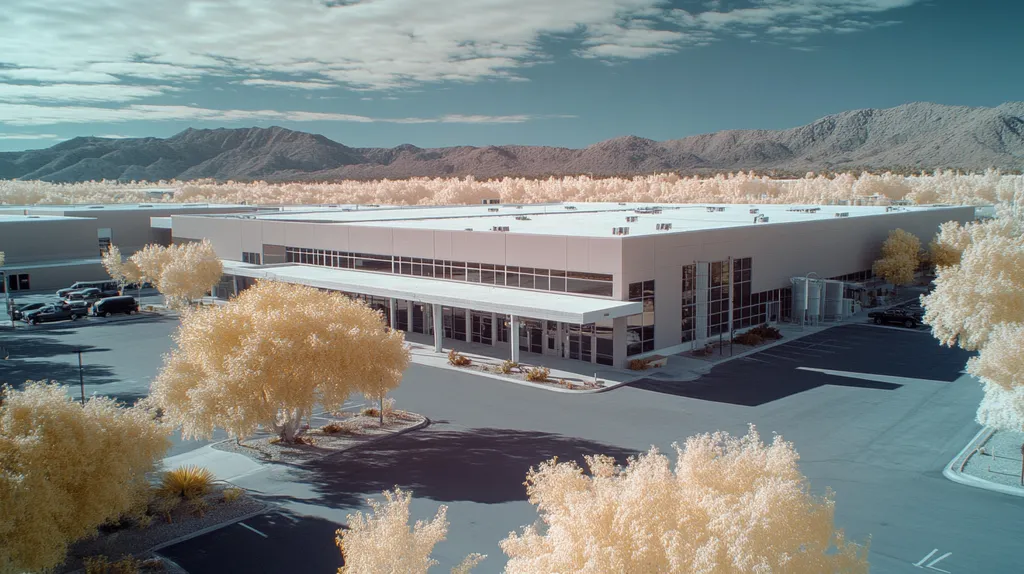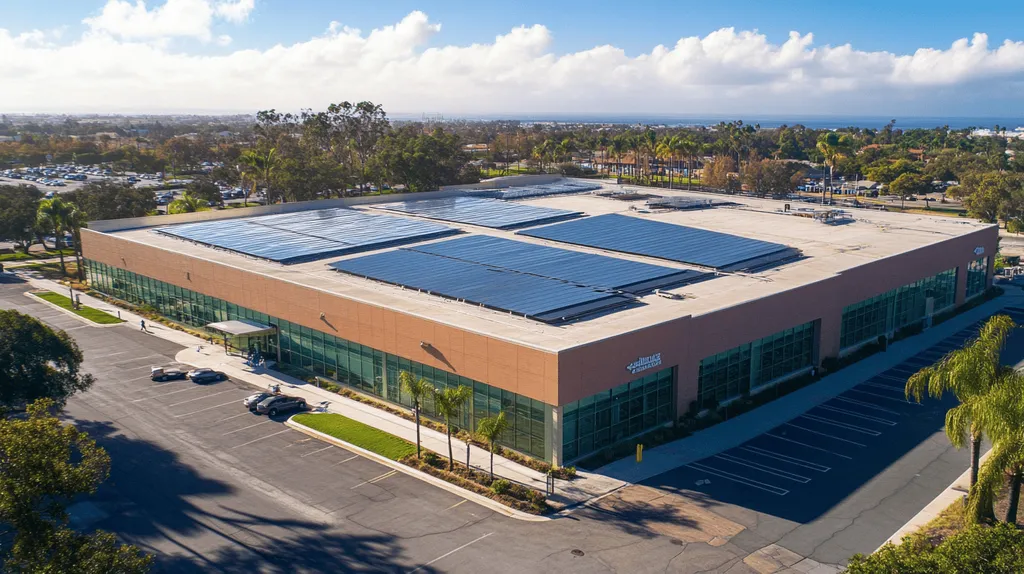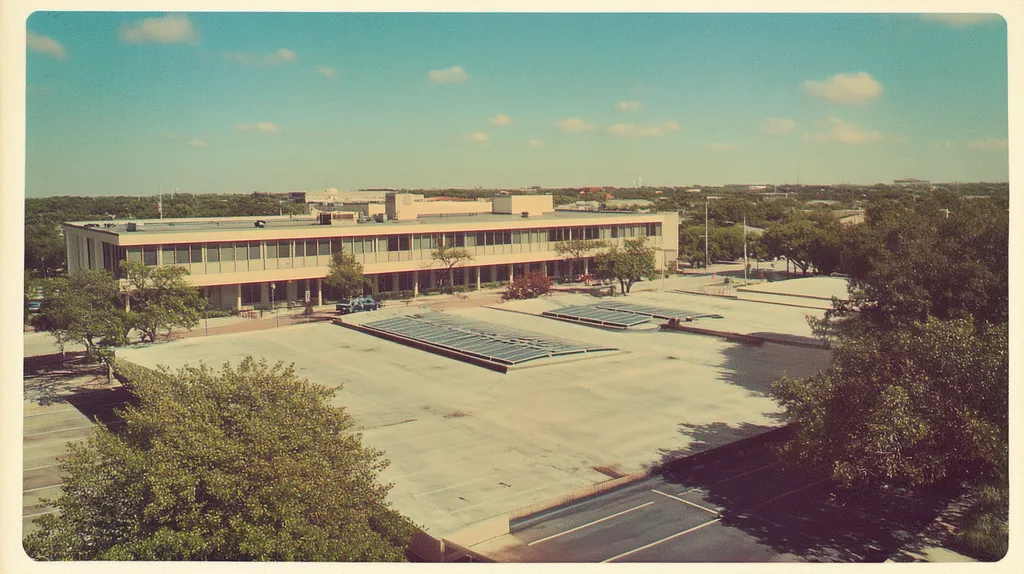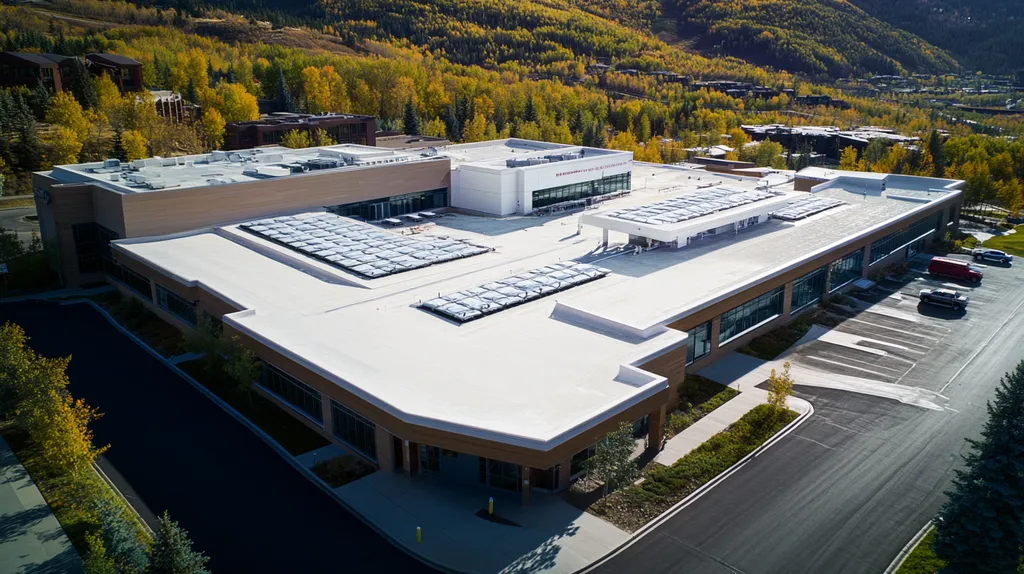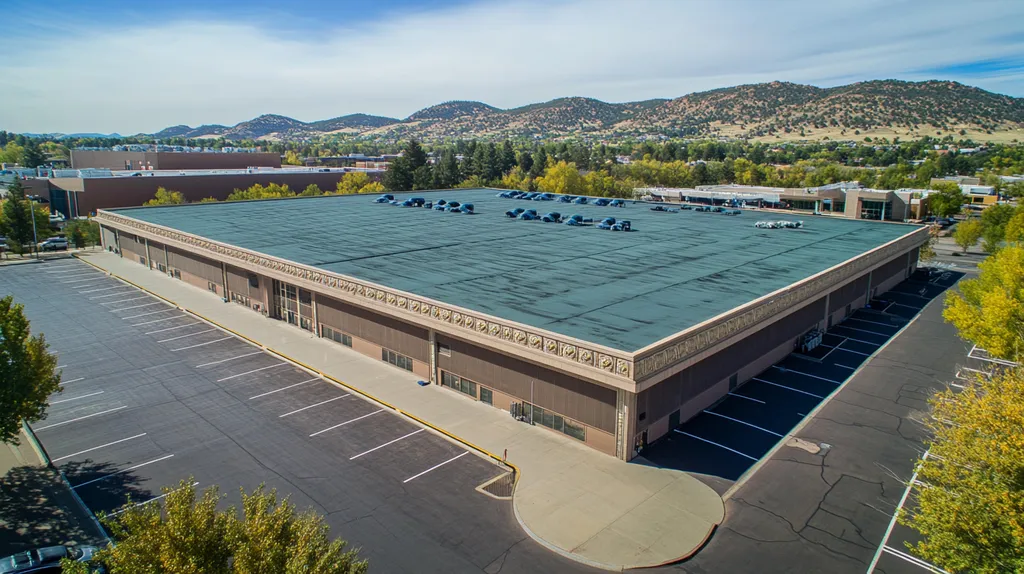Welcome to today’s Battle Royale featuring two roofing heavyweights: “Rubber Grommets” in the east corner versus “Silicone Seals” in the west!
Tonight’s showdown pits these contenders against each other across six punishing rounds designed to test every aspect of their performance for Vent Pipe Sealing Techniques.
At stake? Millions in potential costs, decades of building protection, and the critical performance demands of modern commercial and industrial facilities.
Our professional judging panel will evaluate each round on technical merit, real-world performance, and value delivery. After all six rounds, we’ll declare our ultimate champion.
Ladies and gentlemen, facility managers and building owners… it’s time to rumble!
ROUND 1: INITIAL COSTS & INSTALLATION
In the high-stakes world of commercial roofing, a leaky vent pipe can turn a minor oversight into a five-figure nightmare. Every penetration through your roof is a potential failure point, making the choice between sealing methods critical. While marketing hype would have you believe that every new sealing product is revolutionary, the real battle comes down to two proven contenders: rubber grommets and silicone seals.
Material Expenses
When comparing initial material costs, rubber grommets are the clear budget-friendly champion. These simple, standardized components typically cost 40-60% less than their silicone counterparts, making them attractive for large-scale projects.
Silicone seals command premium pricing due to their advanced formulations and specialized manufacturing processes. While the higher cost often reflects superior material quality, it can strain tight project budgets.
A proper vent pipe cover must both seal effectively and allow adequate ventilation through perforation. (source: Shumaker Roofing)
ADVANTAGE: Rubber Grommets
Installation Complexity
Rubber grommets shine in their straightforward installation process. A competent crew can typically install these pre-formed seals in under 15 minutes per penetration, with minimal special tools or training required.
Silicone seals demand significantly more expertise and precision. The multi-step application process includes surface prep, precise mixing, careful application, and mandatory curing time – all of which increase both complexity and labor costs.
Weather conditions can also impact installation, with silicone being particularly sensitive to temperature and humidity during application. This environmental dependency can lead to scheduling headaches and project delays.
ADVANTAGE: Rubber Grommets
Project Timeline
Speed is often crucial in commercial roofing, where every hour of delay can impact business operations. Rubber grommets excel here, allowing for immediate completion once installed, with no waiting period before exposure to weather.
Silicone seals require significant curing time – typically 24-48 hours under ideal conditions. This waiting period extends project timelines and can create logistical challenges, especially in regions prone to sudden weather changes.
The extended timeline for silicone installation also means longer periods where the roof is vulnerable to unexpected weather events, potentially increasing project risk.
ADVANTAGE: Rubber Grommets
ROUND 1 WINNER: Rubber Grommets
ROUND 2: DURABILITY & LIFESPAN
When a vent pipe seal fails, it’s rarely a gentle drip – it’s more like nature installed a water feature in your ceiling. With repair costs averaging $2,500 per incident, not counting business disruption, choosing the right sealing solution isn’t just about initial savings. The real battle plays out over years of punishing UV exposure, thermal cycling, and weather extremes.
Environmental Resistance
The relentless assault of UV rays, ozone, and temperature swings can turn a robust seal into roof confetti. These environmental factors are the primary enemies of any roofing component, making resistance to them crucial for long-term performance.
Rubber grommets initially show impressive resilience but tend to become brittle over time. Even UV-resistant formulations eventually succumb to degradation, typically showing significant wear within 5-7 years in exposed conditions.
Silicone seals maintain their flexibility and structural integrity far longer under identical conditions. Their molecular structure provides natural UV resistance and temperature stability from -60°F to 400°F, resulting in minimal degradation even after a decade of service.
ADVANTAGE: Silicone Seals
Weather Performance
A properly sealed vent pipe must remain watertight through everything from gentle spring rains to hurricane-force winds. Weather performance determines whether you’re running a tight ship or a very expensive indoor water feature.
Rubber grommets excel in moderate conditions but can struggle with extreme weather. Their pre-formed shape provides good initial sealing but may develop gaps as the material ages and loses elasticity.
Silicone seals create a virtually impenetrable barrier that maintains its grip through the worst Mother Nature can dish out. Their superior adhesion and flexibility allow them to handle building movement and thermal expansion without compromising the seal.
ADVANTAGE: Silicone Seals
Maintenance Requirements
The best sealing solution shouldn’t need a dedicated maintenance team hovering over it with caulk guns at the ready. Long-term performance must balance effectiveness with practical maintenance demands.
Rubber grommets require regular inspection and often need replacement or additional sealing within 5-10 years. Their deterioration can accelerate rapidly once UV damage begins, leading to unexpected failures.
Silicone seals typically need only basic annual inspections as part of routine roof maintenance. Their chemical stability means they rarely require intervention, often lasting the full life of the roofing system when properly installed.
ADVANTAGE: Silicone Seals
ROUND 2 WINNER: Silicone Seals
ROUND 3: PERFORMANCE FACTORS
In commercial roofing, vent pipe seals represent a critical vulnerability where even minor failures can cascade into catastrophic damage. While a properly sealed pipe penetration can protect your building for decades, a subpar solution can turn your ceiling into an impromptu water feature during the next storm.
Modern roofing technology has given us multiple options for tackling this challenge, but the fundamental choice between rubber grommets and silicone seals remains a pivotal decision point for facility managers looking to maximize their roof’s performance.
Chemical Resistance
Industrial environments expose roof components to a brutal cocktail of chemical compounds. From acid rain to industrial emissions, these environmental factors can rapidly degrade improperly chosen materials.
Rubber grommets offer decent resistance to mild chemical exposure but can break down when regularly exposed to industrial solvents or concentrated pollutants. Their molecular structure becomes compromised over time, leading to premature failure.
Silicone seals demonstrate superior chemical resistance across a broader spectrum of compounds. Their inert nature allows them to maintain structural integrity even when exposed to harsh industrial environments.
ADVANTAGE: Silicone Seals
Thermal Performance
Temperature fluctuations create constant expansion and contraction cycles that stress sealing materials. This thermal cycling can create gaps, cracks, and eventual failure points in improperly specified materials.
Rubber grommets maintain flexibility within a moderate temperature range but can become brittle in extreme cold or soften excessively in high heat. This variable performance creates uncertainty in regions with wide temperature swings.
Silicone seals maintain consistent flexibility across an extremely wide temperature range. Their molecular structure resists hardening or softening, ensuring reliable performance in all seasons.
ADVANTAGE: Silicone Seals
Surface Adhesion
The effectiveness of any vent pipe seal ultimately depends on its ability to maintain adhesion to both the pipe and the roof surface. Regular maintenance is crucial for extending seal lifespan and preventing failures. (source: This Old House)
Rubber grommets rely primarily on mechanical compression for their seal. While this provides good initial performance, it can weaken over time as the material ages and loses elasticity.
Silicone seals create both a mechanical and chemical bond with the surfaces they protect. This dual-action adhesion maintains its grip even as the material ages, providing superior long-term performance.
ADVANTAGE: Silicone Seals
ROUND 3 WINNER: Silicone Seals
ROUND 4: MAINTENANCE REQUIREMENTS
In the unforgiving world of commercial roofing, vent pipe seals aren’t just components – they’re the gatekeepers between a dry building and a waterfall through your ceiling tiles. With replacement costs averaging $3,000 per failed seal, maintenance strategy can make the difference between a routine inspection and an emergency response at 3 AM during a thunderstorm.
Inspection Frequency
Every maintenance program lives or dies by its inspection schedule. Missing early warning signs can transform minor issues into major catastrophes, making regular checks crucial for preventing failures.
Rubber grommets demand quarterly inspections due to their vulnerability to UV degradation and temperature cycling. Their deterioration pattern can accelerate suddenly, requiring vigilant monitoring to catch problems before they become critical.
Silicone seals typically need only annual inspections, as their chemical stability provides more predictable aging patterns. This reduced inspection frequency translates directly to lower maintenance overhead.
ADVANTAGE: Silicone Seals
Repair Complexity
Apply a fresh layer of lap-seal caulk around the base of the vent pipe and the edges of the boot every few years to maintain a watertight seal. (source: This Old House)
Rubber grommets often require complete replacement when problems arise, as their one-piece design makes partial repairs impractical. This all-or-nothing approach increases both material costs and labor time.
Silicone seals can often be repaired with targeted applications, allowing maintenance teams to address specific problem areas without full replacement. This flexibility significantly reduces repair costs and complexity.
ADVANTAGE: Silicone Seals
Long-term Cost Impact
The true cost of maintenance extends far beyond simple material expenses. Labor hours, equipment rentals, and potential business disruption all factor into the total maintenance burden.
Rubber grommets typically require replacement every 5-7 years, creating predictable but significant maintenance costs. Their lower initial cost is offset by more frequent replacement cycles.
Silicone seals can last 15-20 years with proper maintenance, dramatically reducing the frequency of major interventions. While repairs cost more when needed, the extended service life results in lower annualized maintenance expenses.
ADVANTAGE: Silicone Seals
ROUND 4 WINNER: Silicone Seals
ROUND 5: SUSTAINABILITY CREDENTIALS
In today’s climate-conscious construction industry, roofing decisions ripple far beyond immediate performance. Every vent pipe seal that ends up in a landfill contributes to a growing environmental crisis, with commercial roofing waste accounting for nearly 8% of total construction debris. The choice between rubber grommets and silicone seals now carries weight beyond mere functionality – it’s about leaving a legacy our grandkids won’t curse us for.
Material Recyclability
The path from roof to recycling bin isn’t just about good intentions – it’s about chemical composition and material processing capabilities. Most commercial roofing materials end their lives in landfills, making recyclability a crucial factor in sustainability calculations.
Rubber grommets present significant recycling challenges due to their composite nature and chemical treatments. Once degraded by UV exposure and weathering, these materials become nearly impossible to process for reuse.
Silicone seals offer superior end-of-life options, with many manufacturers now implementing take-back programs. Their pure silicone composition allows for easier recycling and even potential reprocessing into new sealing products.
ADVANTAGE: Silicone Seals
Durability and Longevity
The most sustainable product is often the one you don’t have to replace. Every premature replacement multiplies the environmental impact through manufacturing, transportation, and disposal costs.
Rubber grommets typically require replacement every 5-7 years, creating a steady stream of waste. This rapid turnover means each installation point generates multiple rounds of disposal over a building’s lifetime.
Silicone seals can maintain effectiveness for 15-20 years when properly maintained. This extended lifespan effectively cuts the material’s environmental footprint by more than half compared to rubber alternatives.
ADVANTAGE: Silicone Seals
Production Impact
Manufacturing processes for roofing materials can rival their in-service environmental impact. Modern production methods must balance performance with responsible resource management.
Rubber grommet production involves energy-intensive vulcanization processes and petroleum-derived materials. These manufacturing methods release significant volatile organic compounds (VOCs) and require substantial energy inputs.
Silicone seal manufacturing generally produces fewer toxic byproducts and requires less energy input. Many manufacturers have also transitioned to clean energy sources for production, further reducing environmental impact.
ADVANTAGE: Silicone Seals
ROUND 5 WINNER: Silicone Seals
ROUND 6: SPECIALIZED APPLICATIONS
When it comes to specialized roofing applications, choosing the wrong vent pipe seal can turn a minor oversight into a $50,000 catastrophe. From food processing facilities battling caustic vapors to pharmaceutical plants requiring absolute containment, standard solutions often fall short. The stakes climb even higher in mission-critical facilities where a single leak can contaminate clean rooms or compromise sensitive equipment.
Industrial Process Exposure
Industrial facilities generate a toxic cocktail of chemical vapors that can destroy standard sealing materials from the inside out. These aggressive compounds create unique challenges that generic solutions simply can’t handle.
Rubber grommets quickly deteriorate when exposed to industrial process vapors. Their composition breaks down under chemical attack, leading to premature failure and potentially dangerous vapor leaks.
Silicone seals demonstrate remarkable resistance to industrial chemicals and process vapors. Their inert molecular structure maintains integrity even when bombarded with aggressive compounds, making them ideal for manufacturing environments.
ADVANTAGE: Silicone Seals
Clean Room Requirements
In pharmaceutical and microelectronics facilities, even microscopic contamination can destroy millions in product. These environments demand sealing solutions that not only prevent water intrusion but also maintain strict air quality standards.
Rubber grommets struggle to maintain the necessary seal integrity for clean room applications. Their tendency to shed particles as they age creates contamination risks that most clean room facilities cannot tolerate.
Silicone seals excel in clean room environments due to their extremely low particle emission and superior containment properties. Their stable composition prevents degradation-related contamination while maintaining critical air barriers.
ADVANTAGE: Silicone Seals
High-Temperature Applications
Install flashing and proper water control materials around all roof penetrations to prevent moisture intrusion in high-temperature environments. The success of these installations depends critically on material selection and proper integration with the roof’s water control layer. (source: Building America Solution Center)
Rubber grommets become unreliable in high-temperature applications, softening and potentially failing when exposed to hot exhaust or process venting. Their temperature limitations create significant risks in industrial settings.
Silicone seals maintain their structural integrity and sealing properties even when subjected to extreme temperatures. Their superior heat resistance makes them the clear choice for hot stack venting and similar high-temperature applications.
ADVANTAGE: Silicone Seals
ROUND 6 WINNER: SILICONE SEALS
AND THE WINNER IS…
After six grueling rounds of technical evaluation, we have our verdict. With a dominant 5-1 performance, SILICONE SEALS has emerged as our undisputed champion in the battle for vent pipe sealing supremacy!
The champion’s path to victory was paved with superior performance in durability, chemical resistance, and sustainability. Its knockout punches came in specialized applications, where its versatility and longevity simply couldn’t be matched.
But don’t count rubber grommets out entirely, folks! In projects where budget constraints are tight and installation speed is critical, these reliable veterans still deliver a solid performance, as demonstrated by their victory in Round 1.
Remember, champions – every building tells its own story. Local climate conditions, facility requirements, and specific roofing configurations can all impact performance outcomes. While silicone seals have claimed the title belt today, your facility’s unique needs may favor a different contender.
Always consult with qualified roofing professionals who can evaluate your specific situation before making your final selection. Building codes, warranty requirements, and manufacturer specifications must be considered.
In the high-stakes arena of commercial roofing, there’s no substitute for making an informed choice. Because when that next storm rolls in, you want your vent pipe seals ready to go the distance!
FREQUENTLY ASKED QUESTIONS
Q. What are the initial costs for commercial roof sealing methods?
A. Rubber grommets usually cost 40-60% less than silicone seals, making them budget-friendly. Their straightforward installation saves both time and money, making them ideal for large-scale commercial projects.
Q. How do durability and lifespan compare for commercial roof seals?
A. Silicone seals significantly outlast rubber grommets, often lasting 15-20 years. While rubber may seem durable upfront, it typically deteriorates within 5-7 years due to environmental exposure.
Q. Which type of commercial roof seal performs better under chemical exposure?
A. Silicone seals outperform rubber grommets in resisting chemical exposure. Their inert properties allow them to withstand harsh industrial environments without breaking down, unlike rubber options.
Q. What maintenance is required for silicone seals on industrial roofs?
A. Silicone seals typically require annual inspections, which is less frequent than the quarterly checks needed for rubber grommets. Their chemical stability allows for easier long-term maintenance.
Q. Are rubber grommets environmentally sustainable for commercial roofs?
A. Rubber grommets face significant recycling challenges and are often not sustainable. In contrast, silicone seals can be recycled more efficiently, making them a better choice for eco-conscious roofing.
Q. Can silicone seals be used in specialized applications on industrial roofs?
A. Yes, silicone seals excel in specialized applications, such as clean rooms, due to their superior contamination containment and chemical resistance, making them essential for critical environments.
Q. What are the weather performance differences between rubber and silicone seals?
A. Silicone seals create an impenetrable barrier against extreme weather, whereas rubber grommets may develop gaps over time, particularly in severe conditions, leading to potential leaks.

